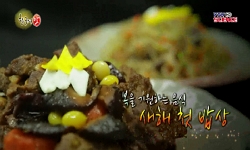본고에서는 검단리유형의 무덤을 검토하였다. 지역적으로는 경북북부내륙에서 포항, 경주, 울산, 양산에 이르는 지역이며 시기적으로는 청동기시대 전기에 해당되는 자료도 함께 검토하였...
http://chineseinput.net/에서 pinyin(병음)방식으로 중국어를 변환할 수 있습니다.
변환된 중국어를 복사하여 사용하시면 됩니다.
- 中文 을 입력하시려면 zhongwen을 입력하시고 space를누르시면됩니다.
- 北京 을 입력하시려면 beijing을 입력하시고 space를 누르시면 됩니다.
부가정보
국문 초록 (Abstract)
본고에서는 검단리유형의 무덤을 검토하였다. 지역적으로는 경북북부내륙에서 포항, 경주, 울산, 양산에 이르는 지역이며 시기적으로는 청동기시대 전기에 해당되는 자료도 함께 검토하였다. 그리고 그동안 막연히 청동기시대라고 생각한 것 중 일부는 삼한시대에 속하는 것을 알게 되었다. 매장주체부의 구조에 따라 토광묘, 할석석관묘, 판석석관묘, 위석석관묘(지석묘), 적석묘로 분류하 였다. 대부분의 청동기시대 무덤은 후기에 속한다. 토광묘, 할석석관묘와 판석석관묘의 일부는 청동기 시대 전기에 속한다. 판석석관묘와 지석묘 일부는 삼한시대까지 지속되고 적석묘는 모두 삼한시대에 속한다. 무덤의 구조와 종류는 강원 영서지역과 동일하다. 대부분 북부지역에서 남쪽으로 전파되었다고 생각된다. 요령지역에서 서북한지역, 경기·강원지역을 거쳐 동남해안지역까지 전해 오면서 약간의 변화를 거쳤을 것이다. 매장주체부가 위석형석관인 지석묘는 호남지역이 원류이며 남쪽으로부터 전해진 것으로 생각된다. 검단리유형은 송국리문화분포권에 비해 조사된 무덤의 숫자가 적다. 원래 무덤의 축조(장례행위를 포함)가 적었던 것이 아니라 다음의 두 가지 이유 때문에 적다고 판단하였을 것이다. 첫째는 매장주체부가 지상식 혹은 반지하식의 구조였는데 무덤이 삭평되어 잔존하지 않을 가능 성이다. 그것은 화장, 풍장, 세골장과 같은 이차장의 장법이 원인이 될 수 있다. 둘째는 가옥장이 활발 했을 가능성이다. 핵가족에서 주거지 구성원의 죽음은 그 주거지가 폐기되는 원인이 될 것이다. 동남 해안지역의 청동기시대 주거지는 화재로 폐기된 예가 많은데 매장행위와 관련된 화재일 가능성이 있다. 특히 적석된 주거지가 무덤으로 전용되었을 가능성을 제기하였다. 두 가지의 가능성 모두 화장과 같은 이차장이 전제가 된다. 즉 송국리문화분포권의 주된 시신매납방법은 신전장인데 반해 동남해안 지역은 화장, 풍장, 세골장과 같은 이차장이 유행한 것을 알 수 있다.
다국어 초록 (Multilingual Abstract)
This paper examined the tomb of bronze age in Kumdan-Ri type distribution range As a difference of burial main part, I classified several tombs such as a soil hole grave, a split stone grave, a flat stone grave, dolmen and a piled stone grave.The majo...
This paper examined the tomb of bronze age in Kumdan-Ri type distribution range As a difference of burial main part, I classified several tombs such as a soil hole grave, a split stone grave, a flat stone grave, dolmen and a piled stone grave.The majority of the tombs belonged to Bronze age. The parts of a soil hole grave, a split stone grave and a flat stone grave were in the former period of Bronze age. Especially a flat stone grave and dolmen are continued for Samhan era. But a piled stone grave appeared in only Samhan age. The structure and style of the tomb in Kumdan-Ri type distribution range are same as Young-seo area. I believe that the origin of those is Yo-ryung area. And the style was spread from the Northern to the Southern area. This style was little bit changed by way of Western north Korea area and southeastern coast. I suppose that dolmen which was formed with dome stone grave is brought from southern part, especially Honam area. The excavation of tomb for Kumdan-Ri type distribution range is less than Songuk-Ri cultural distribution range. I believe there are two reasons. One is the possibility that the main structure of tomb was disappeared in Kumdan-Ri type distribution range. It means that main structure was ground type or semi-underground type, which was based on the secondary burial, such as cremation, aerial burial, and washed bone burial. The other is the possibility of booming the house burial. Death of community member causes falling into disuse of dwelling in nuclear family. I believe dwelling of Bronze age in Eastern south coast area was related with burial action. Especially, I suppose that dwelling which was piled stone was reserved for tomb. All possibilities are based on secondary burial like cremation. Therefore, I believe the main burial method of Songuk-Ri cultural distribution range was whole body burial while the popular burial method of Kumdan-Ri type distribution range was the secondary burial like cremation.
목차 (Table of Contents)
- Ⅰ. 머리말 Ⅱ. 유적의 검토 Ⅲ. 무덤의 편년 Ⅳ. 검단리유형 무덤의 기원지역 Ⅴ. 검단리유형의 葬法 Ⅵ. 맺음말
- Ⅰ. 머리말 Ⅱ. 유적의 검토 Ⅲ. 무덤의 편년 Ⅳ. 검단리유형 무덤의 기원지역 Ⅴ. 검단리유형의 葬法 Ⅵ. 맺음말





 KCI
KCI 스콜라
스콜라






